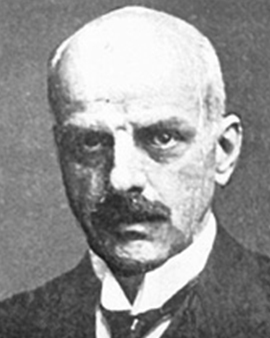Max Kurzweil came from a very wealthy family, his father was the owner of a sugar factory in Moravia. After the sale of the factory, the family moved to Vienna and his father retired.
Max's extraordinary artistic talent became apparent at an early age and he was able to be encouraged thanks to the optimal financial situation of the family.
Max graduated from high school and studied at the Academy of Fine Arts in Vienna from 1886 to 1892. There he was taught, among others, by the German-Austrian painter Christian Griepenkerl and the famous Austrian "Orient painter" Leopold Karl Müller. "Orient-Müller" traveled again and again to Egypt and recorded his impressions of the fascinating life and landscapes in watercolors and oil paintings.
The studies in Vienna were followed in 1892 by a stay at the Academy Julien in Paris. Here Max Kurzweil studied for two years.
Already the first works of Max Kurzweil were successfully exhibited and received great recognition. He became a well-known Austrian painter and graphic artist of Art Nouveau and painted, for example, "Lady in a Yellow Dress." "The Blacksmith" and "The Fisherman."
Soon he placed light and color at the center of his work. This logically led him to Impressionism, which since the second half of the 19th century has mainly influenced French painting. Following this model, Max Kurzweil created similarly light-filled landscape impressions.
In Vienna, he was awarded the "Small Golden State Medal" in 1896 for his painting "Genesen" (Convalescence), which he created in Brittany.
The Bohemian painter, graphic artist and craftsman Emil Orlik (1870-1932) introduced him to Japanese woodblock prints. In 1903, Max Kurzweil created several woodblock prints, e.g. "The Pillow" and "Sitting Nude", based on this image reproduction technique. Some of his woodcuts are influenced by the style of Expressionism, which spread at the end of the 19th century. At that time Max Kurzweil was particularly inspired by the sensational works of the Norwegian painter Edvard Munch (1863-1944) and the Swiss Ferdinand Hodler (1853-1918).
In 1895, Max Kurzweil married the daughter of the vice-mayor of the Breton port city of Concarneau, a woman of great beauty. His wife often served as a model for his drawings and woodcuts.
At that time he painted, for example, the "Port of Concarneau" and "The pond.
But unfortunately it did not become a happy marriage. Max and Marie-Josephine Marthe remained childless and eventually lived apart. His wife did not feel at home in Vienna at all and longed to return to her French homeland.
Max Kurzweil taught drawing and painting at the Women's Academy in Vienna from 1909.
He suffered from his melancholy throughout his life. Thus, together with his painting student Helene Heger, he took his own life in May 1916. Max had an affair with this young woman, which weighed heavily on his soul. He saw the only way out for both of them was suicide in his own studio.
×





.jpg)
.jpg)
.jpg)
.jpg)
.jpg)
.jpg)
.jpg)
.jpg)
.jpg)
.jpg)
.jpg)
.jpg)
.jpg)
.jpg)
.jpg)
.jpg)
.jpg)
.jpg)
_-_(MeisterDrucke-1345590).jpg)
_-_(MeisterDrucke-1345590).jpg)
.jpg)
.jpg)
_-_(MeisterDrucke-1233513).jpg)
_-_(MeisterDrucke-1233513).jpg)
.jpg)
.jpg)
.jpg)
.jpg)
.jpg)
.jpg)
.jpg)
.jpg)
.jpg)
.jpg)
.jpg)
.jpg)
.jpg)
.jpg)
.jpg)
.jpg)
 - (MeisterDrucke-17784).jpg)
 - (MeisterDrucke-17784).jpg)
_-_(MeisterDrucke-1358902).jpg)
_-_(MeisterDrucke-1358902).jpg)
_-_(MeisterDrucke-1517284).jpg)
_-_(MeisterDrucke-1517284).jpg)
.jpg)
.jpg)
.jpg)
.jpg)
.jpg)
.jpg)
.jpg)
.jpg)
.jpg)
.jpg)
_-_(MeisterDrucke-1233512).jpg)
_-_(MeisterDrucke-1233512).jpg)
.jpg)
.jpg)
.jpg)
.jpg)
_-_(MeisterDrucke-1308785).jpg)
_-_(MeisterDrucke-1308785).jpg)
_-_(MeisterDrucke-1584251).jpg)
_-_(MeisterDrucke-1584251).jpg)
.jpg)
.jpg)
.jpg)
.jpg)






